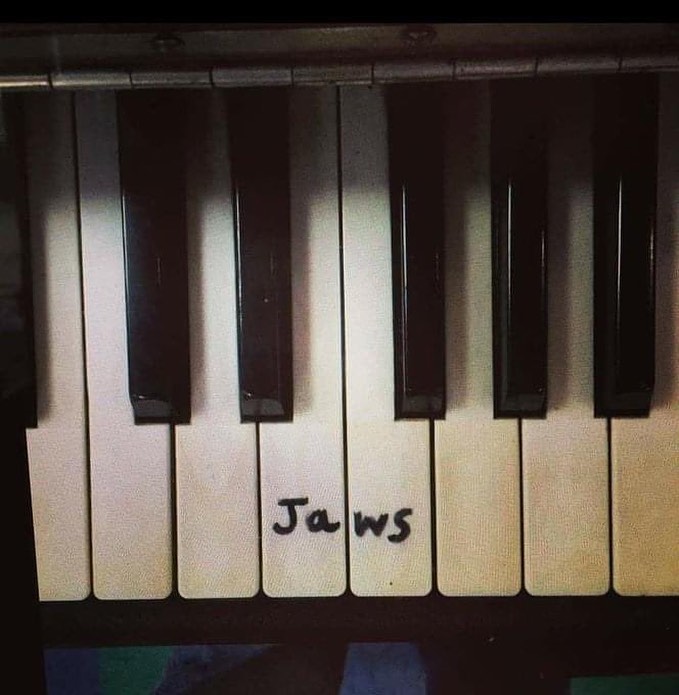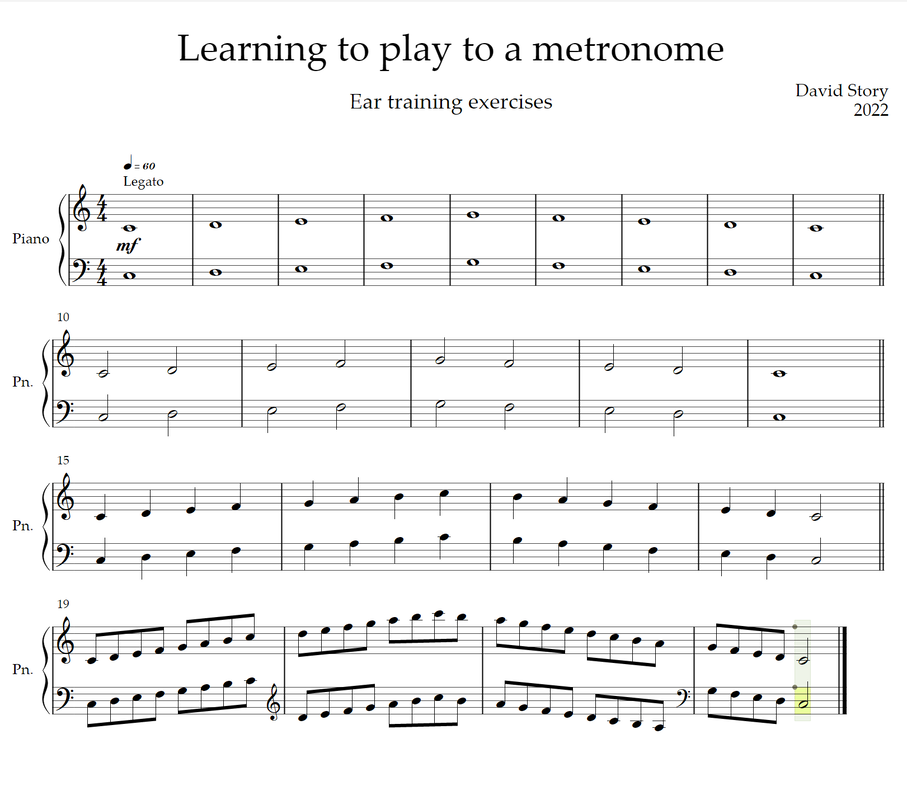|
I spent the summer of 2001 making music on the Mediterranean near Santa Pola, Spain in a small apartment overlooking the sea. I fondly remember the sun, the heat, the paella, the wine, the flowers, and the nightly walks along the seaside promenade.
Now to the story. I had had big plans of dragging my portable piano to Spain. At the check-in counter in Toronto the agent promptly rejected the piano in the lovely crate I had built. The airline won’t let me check it as baggage because they said it was as big and heavy as a coffin. Dejected I sent it home in an in-law’s car trunk. As luck would have it, I had another in-law in Spain with an old unused Casio keyboard of sixty-five keys, one pedal, a stand, and books of Bach and Chopin. I set up that keyboard in a window with the ocean view. Then I started playing during the long afternoon siestas. Bach, Chopin, and I quickly fell in love. Apparently so did my new neighbors who, unbeknownst to me, heard me practicing hours on end through that open window. Back in Canada I started asking about for a “Classical” piano teacher. A professor from McMaster University recommended Leon Karan. I set up a lesson. It didn’t go well. I banged through some scales and thumped out my Bach. Though I was embarrased and humiliated, Leon was kind. After I recovered, he said, “you are of course going to do your ARCT?” “I am?” Five thousand hours later I earned an ARCT diploma in piano pedagogy and won a national scholarship. Thank you, Leon, for your patience. You changed my life. David Revised August 2022
0 Comments
Preparing to succeed is the first step. Here are some things successful student do to prepare.
1. They understand how to use Zoom. They have set up the camera so that I can see their hands. The screen is set up so that they can see me as well. Some students use more than one camera. (Most students set up the laptop on a table to the side of the piano.) 2. They have created a realistic practice schedule. They understand that learning to play the piano to a level of proficiency takes time. 3. They have created an organized practice space for productive work. 4. They understand the costs involved. 5. They have told their significant others of their plans and their need for emotional support and encouragement. 6. They understand that they need to lean on their strengths when the going gets tough. If I can help you get started, please call me. David Revised August 2022 Brazil is a large, musically rich country. it is home to the Samba, Bossa Nova, Choro, and many other categories and sub-categories of music. The first step to learning how to play Brazilian Jazz is to immerse yourself in the Brazilian Jazz sound by watching YouTube videos and taking every opportunity to hear the music played live. Next step is to pick one recording to explore. I've chosen The Girl from Ipanema. Secure a modern lead sheet of the piece. Musicnotes.com - Search Results for girl from ipanema Now listen to the classic recording below while following along. The first thing you will notice is that João Gilberto, the male singer, sings the melody freely, not as notated. Astrud Gilberto, the female singer, sings the melody closer to the lead sheet only the first time. On the repeat it too is rhythmically freer. Now it is your turn to mimic the melody as close as you can to the recording. This may take two or one hundred tries. I recommend you stick with it. There is an apocryphal story that Herbie Hancock needed to listen to an Oscar Peterson solo one hundred times before he "got" it. Apparently, it took only ninety-nine times on the next solo. You get the picture. Next up I ask students to explore the guitar style featured in the recording. Followed by percussion Ending with the piano Now we are ready to make a go of playing the piece. You will now be able to hear more clearly the rhythmic moves and feel of the music. Start copying what you hear.
If I can help, call me. David Revised August 2022 Steps to successDay One
1. Dust off the metronome. 2. Set it at 60. Also known as 60 BPM (Beats per minute) 3. Practice counting aloud to the metronome: 1-2-3-4, one number per click. 4. Continue counting aloud and clap measures 1 to 9. 5. Continue counting aloud and play the right-hand notes measures 1 to 9. Counting aloud is the imperative step for success. 6. Add the left hand and repeat measures 1 to 9. 7. Move the metronome to 70 BPM and repeat the passage. 8. Call it a day. Day Two 1. Repeat yesterday's steps with the whole notes at 80 BPM. 2. Reset the metronome to 60. 3. Practice counting aloud to the metronome: 1-2-3-4 one number per click. 4. Continue counting aloud and clap measures 10 to 14. 5. Continue counting aloud and play the right-hand notes measures 10 to 14. Counting aloud is imperative for success. 6. Add the left hand and repeat measures 10 to 14. 7. Move the metronome to 70 BPM and repeat the passage. 8. Call it a day. Day Three 1. Repeat yesterday's steps with the half notes at 80 BPM. 2. Reset the metronome to 60. 3. Practice counting aloud to the metronome: 1-2-3-4 one number per click. 4. Continue counting aloud and clap measures 15 through 18. 5. Continue counting aloud and play the right-hand notes measures 15 through 18. Counting aloud is imperative for success. 6. Add the left hand and repeat measures 15 through 18. 7. Move the metronome to 70 BPM and repeat the passage. 8. Stop for the day. Day Four 1. You know what to do. If I can help you learn to count aloud while playing, call me. David Revised August 2022 |
You've got to learn your instrument. Then, you practice, practice, practice. And then, when you finally get up there on the bandstand, forget all that and just wail. AuthorI'm a professional pianist and music educator in West Toronto Ontario. I'm also a devoted percussionist and drum teacher. Categories
All
|




 RSS Feed
RSS Feed